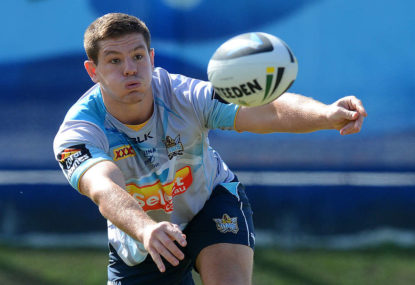Alistair Dean
new author
Roar Rookie

The history of the NRL is filled with the ghosts of failed expansion teams and historic clubs who were told they were no longer viable. From the Western Reds to the South Queensland Crushers, Australian rugby league’s attempts to expand its national competition have been littered with casualties.
Given that expansion is now back on the NRL’s agenda it would be worthwhile looking at these past failures and asking whether the NRL can legitimately support an expansion of the competition at this time.
With clubs like the Titans and Raiders on life support and others such as Wests Tigers, St George Illawarra and Cronulla receiving financial assistance, not to mention the Knights being outright owned by the NRL, talk of expanding seems premature.
Despite the financial woes of these existing clubs the real issue is that there is simply not enough talent to support expansion of a competition which is already deeply lopsided.
The most recent expansion club, Gold Coast Titans, provides a case study of the difficulties the NRL will face in any attempts at expanding beyond the current 16 teams. Despite three previous failed attempts to establish a permanent presence in the area – RIP the Giants, Seagulls and Chargers – the Titans seemed like a sure thing on paper.
Based in a major metropolitan area in league-mad Queensland, with a state of the art new stadium complex in Robina and a team filled with talent, including the likes of Scott Prince, Mat Rogers and Preston Campbell, the Titans seemed destined for success. Yet coming into their ninth season many are questioning the long-term viability of the club as it continues to struggle financially and fails to find corporate backing.
For the upcoming season the Titans have failed to attract a shirt, lower back and sleeve sponsor and are said to be considering offering the spots to a charity if sponsorship cannot be obtained before the start of the campaign. Given the Titans struggles to establish themselves as a financially viable organisation it seems the NRL would do well to ensure the club’s long-term future before considering expansion or risk losing the area to Aussie rules forever.
Another major impediment to the NRL’s expansion is the available talent and whether the competition could support an additional 50 first grade spots (based on two 25-man rosters). One of the NRL’s greatest strengths is its ability to continually produce first rate talent while simultaneously haemorrhaging stars to rival codes, as the recent loss of Sam Burgess, Jarryd Hayne and Sonny Bill Williams attests.
Yet even if the NRL improved its ability to retain stars like Israel Folau there are simply not enough first-grade calibre players around to support 18 teams. This is particularly true of the skill positions of fullback, halfback and hooker, with several existing clubs already seriously lacking in those areas.
No club has felt the uneven distribution of talent across the league more keenly than Canberra, having been shunned by a string of high profile players from James Tedesco to Josh Mansour. While the Raiders remain financially viable due to their association with the Canberra Raiders Group, the club is unable to attract the talent it needs to compete and struggles to retain the talent it helps develop like Anthony Milford.
The decline of the Raiders’ fortunes from its golden age in the late 1980s to the mid ’90s should give the NRL pause when considering the future of the Melbourne Storm as its golden generation start to age and eventually retire.
The NRL’s 1998 season provides an example of what the competition might look like if the playing talent is stretched too thinly. That season a record 20 clubs fielded teams in the competition in what was meant as a Darwinian battle of survival. It was no coincidence that this was also one of the most lopsided seasons in the competition’s history, as teams like the Chargers and Magpies proved to be weekly whipping boys, regularly getting cricket scores put up against them by stronger teams.
The season’s end saw the Adelaide Rams and Gold Coast Chargers fold, while Illawarra and St George merged as the competition moved toward a 14-team competition.
None of this is to say that expansion couldn’t work, but if we are to see the likes of the West Coast Pirates, Brisbane Bombers or Central Coast Bears in the 2018 season, the NRL needs to seriously consider whether expansion is both financially viable and realistic based on the playing talent available.
My guess is that given the lure of increased TV revenue, the NRL will introduce second Brisbane based and New Zealand based teams. Unfortunately if this happens, teams like the Raiders, Titans and Sharks might become endangered species.